Grape leaves are the purpose of my existence. They epitomise all that is excellent about home cooking and show Lebanese cuisine at it's best - simple, skilled and absolutely delicious.
Growing up, these were always my favourite and even today, my mum still calls me when she's made some because she is such a lovely little woman.
There are two ways to make grape leaves; one is to roll them and tie them up with some string and cook them in a tomato sauce. This is more common for grape leaves stuffed with mince meat and rice.
The other less fiddly way is to stack them in a pot and slow cook them in brine until the leaves are well done.

The filling
I much prefer the vegan version with parsley, tomatoes, short grain rice and onion forming the core ingredients.
You don't want to chop the ingredients too roughly as you will need the stuffing to roll easily without tearing the grape leaf, but obviously it is not tabbouleh so don't be too precious.
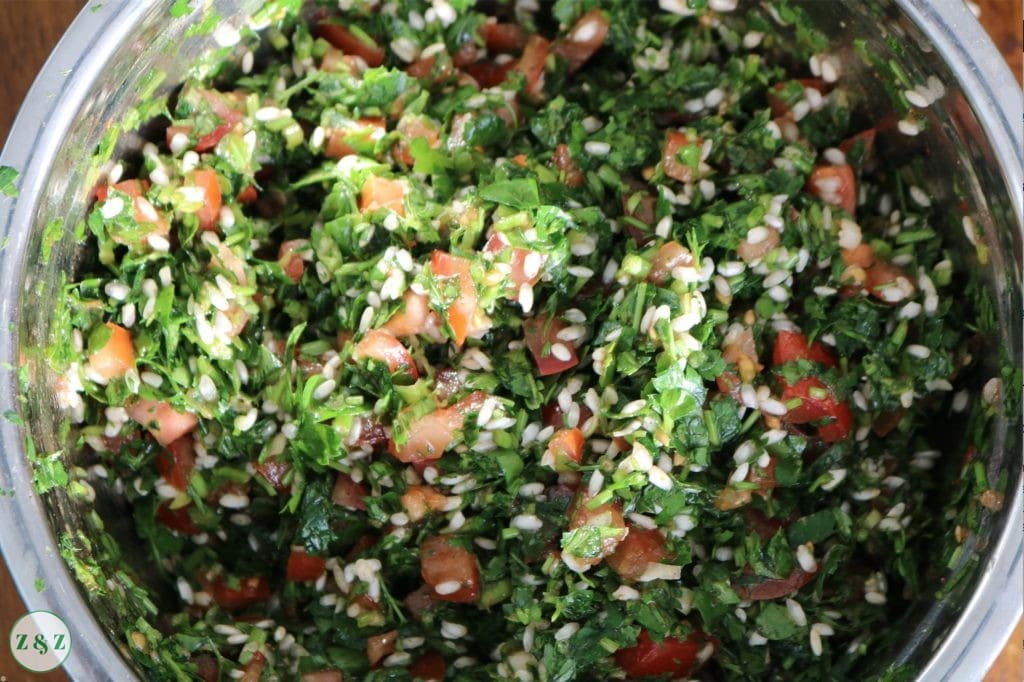
Who knew you could successfully plant grape leaves in the UK without much effort. This year we managed to grow two different grape leaf plants and we even managed a few bunches of grapes which made me disproportionately happy.
Try and find a plant that gives you rounder broad leaves rather than the ones with lots of gaps as they are harder to roll.
With fresh leaves, you will need to blanch them in hot water before you stuff them. You can store them in brine for a few months and I've heard they freeze well too though I have never tried myself.
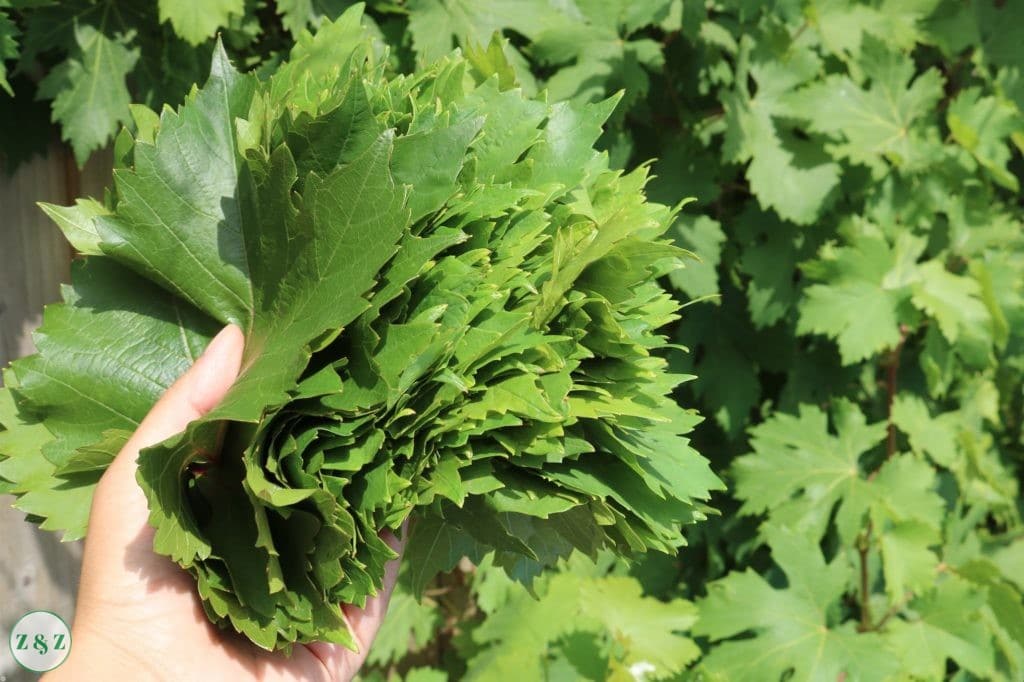
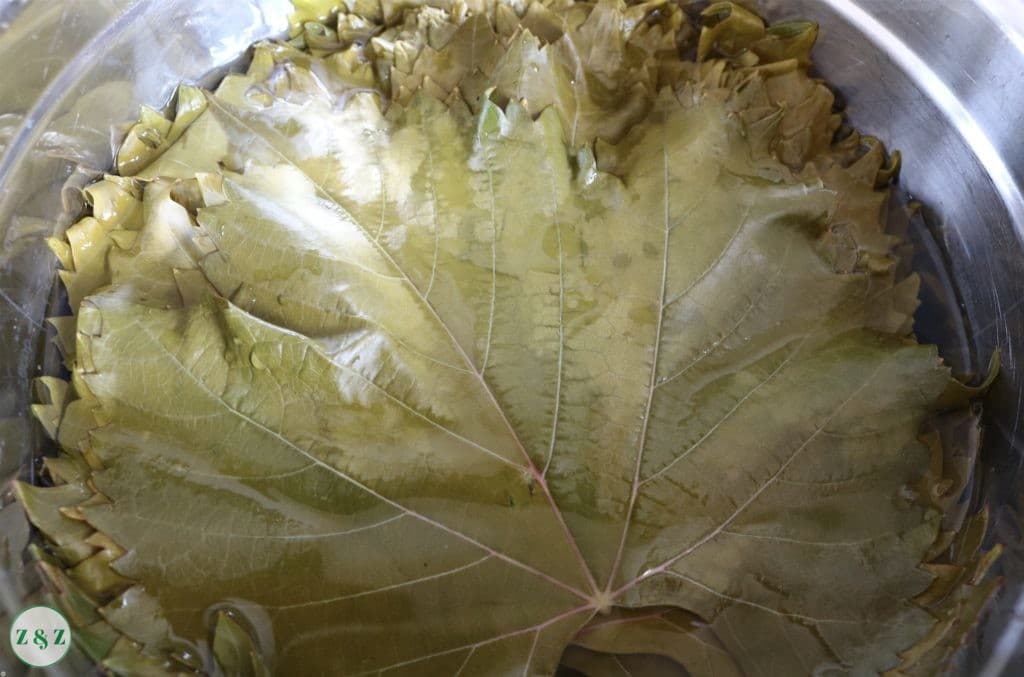
When out of season, you can find jars of pre-blanched grape leaves in your local Middle Eastern store and they taste just as delicious. I have found the Californian, Turkish or Egyptian varieties are the best.
Top tips
I like to line the bottom of the pan with some sliced potatoes as they absorb all the lovely juices. The key to getting perfect grape leaves is to taste the brine just as it comes to the boil.
The brine will indicate how salty or lemony the final dish will be and if I get that right then I can just leave it to slow cook for another hour.
Some people like to add a drizzle of pomegranate molasses as the end but I don't think it necessary as you don't want to conceal the fresh flavours.

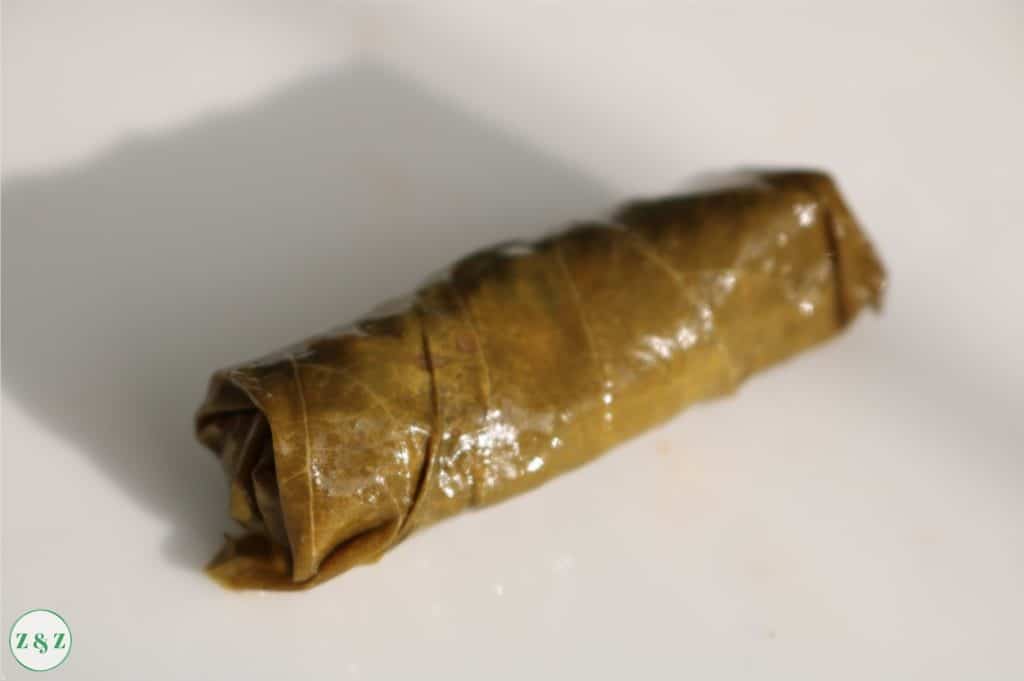
To roll up the grape leaves, flatten out a leaf on a large plate and add a tablespoon of filling. Bring in the sides at each end and roll up.
Don't press too tightly or they will tear but don't make them too loose or they will fall apart in the pot when cooked.

Although grape leaves are often relegated to starters in most restaurants, they are often the star of the show in many Arab homes, especially when they are turned out upside down onto a giant platter and suddenly three hours of work disappears in five minutes 😝 but hey, we are talking about life long food memories which make it worth it every single time.
📖 Recipe
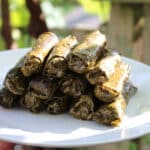
Lebanese Stuffed Grape Leaves (warak enab bi zeit)
Vegetarian version of stuffed grape leaves
Ingredients
- 1 Jar 450g of grape leaves in brine or approx 60 fresh leaves
- 2 medium sized potatoes
- 2 large bunches of parsley
- 8 medium sized tomatoes
- 2-3 spring onions
- ⅓ of a medium onion or 1 shallot
- small handful of mint leaves
- 2 cups of short grain rice
- 2 lemons juiced
- 1 tablespoon tomato concentrate
- 1 tablespoon salt
- 1 tablespoon 7 spice
- ½ cup of regular olive oil
- 1 cup of water
Instructions
-
If you are using fresh leaves, blanche them in hot water for five minutes and drain. If you are using grape leaves from the jar, rinse them in cold water and drain
-
Finely chop the parsley, tomatoes, mint and onions. Add to a bowl
-
Add the rice, salt, 7 spice, tomato concentrate, olive oil and the juice of 1 lemon to the bowl and stir well
-
Peel the potatoes and slice approximately 1 cm thick and arrange them at the bottom of the pot
-
Prepare your work area with one tray to roll the grape leaves beside the mixture and cooking pot
-
Lay out one grape leaf on the tray and remove any stems
-
Add 1 tablespoon of mixture in the middle of the grape leaf and tuck in the sides. Roll up firmly into a cigar shape. Adjust the mixture amount depending on the size of the leaf
-
Stack the grape leaves into layers in the pot. If you have too much liquid in the mixture drain some onto the stacked leaves using a fine sieve
-
Leave around 10cm space at the top of the pot as the grape leaves will expand when cooked
-
When you finish rolling the grape leaves, add ½ teaspoon of salt to 1 cup of water and the juice of half a lemon to make the brine
-
Press down the grape leaves with a sturdy plate or lid one size smaller than your pot. Pour on enough brine to cover and turn the heat on to medium high
-
After 20 minutes, reduce the heat to low and remove the plate/lid. Taste the brine that has come to the surface and adjust the salt/lemon levels as necessary. Cook for another hour on the lowest heat setting.
-
Taste one stuffed grape leaf before you turn the heat off to make sure the leaves are well done
-
Turn the dish over onto a large platter for spectacle. Serve hot or cold.
Recipe Video
If you make any of our recipes let us know how it went by giving us a star rating below.
Check out our Youtube page for full video tutorials, our Facebook group to discuss Lebanese cooking, as well as our tiktok page for quick tips.
You might also like these recipes from the Zaatar and Zaytoun collection:


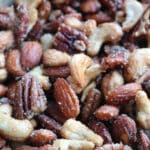
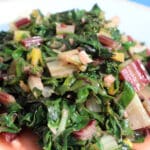

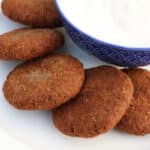

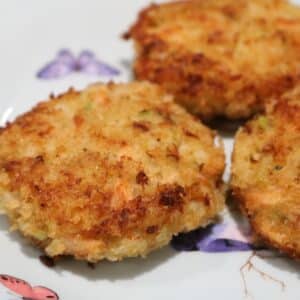


Sallie
Hello to every one, it's genuinely a nice for me to visit this website, it consists of
valuable Information.
Zaatar
Thanks Sallie its a pleasure.
Anonymous
My favourite of all time!
Zeina
My all time fav
genan
amazing
Reda
Hello, I enjoy reading all of your article. I wanted to write a little comment to support you.
Janna
I wish I could grow a grape tree
Joanna
My all time favourite
Lin
Just the recipe I was looking for
GH
So normally I would just ask my auntie or sister for a recipe but TBH, they don't make it quite like my mom used to. I was a little apprehensive to adding 7 spices in the hashwi as I have never seen that done before but I followed the recipe to the letter nonetheless. Gotta say, they came out pretty damn good.
Not sure what the cup of water in the hashwi does other than make it soupy.
I'm thinking to omit that next time as I grew up with the rolls tight and almost have a bit a snap to them when biting. The difference may be a drier hashwi vs this wet one.
In any case, bravo. very good recipe.
Bookmarked!
Gino
I have learned lot of things thanks.
Zenaida
Thanks for sharing
Vernita
I am really delighted for this information.
red168
I couldn't refrain from commenting. Very well written!
Mora
tenho ficado as últimas noites fuçando seu blog
e achei muita coisa boa.